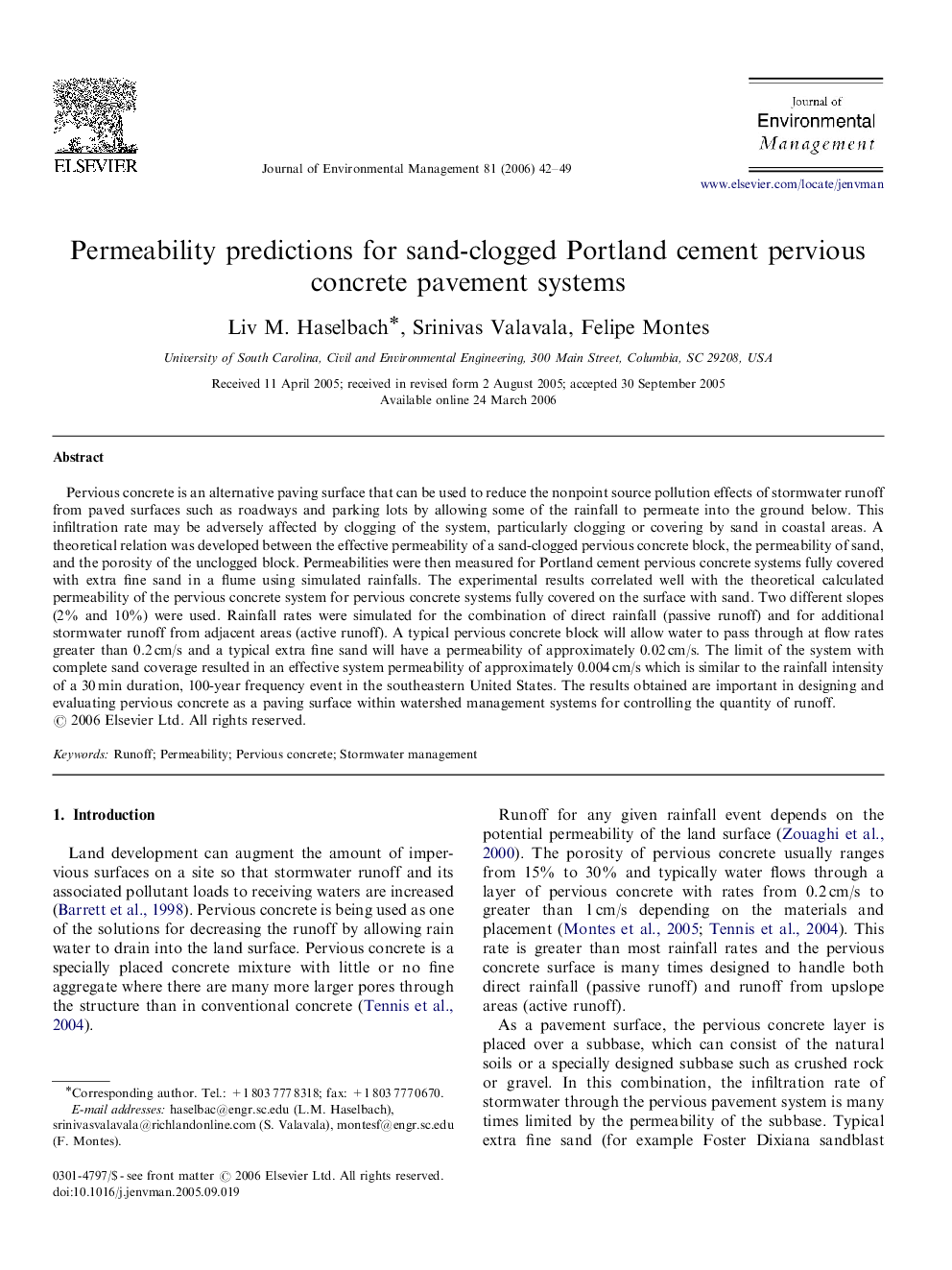| Article ID | Journal | Published Year | Pages | File Type |
|---|---|---|---|---|
| 1058165 | Journal of Environmental Management | 2006 | 8 Pages |
Pervious concrete is an alternative paving surface that can be used to reduce the nonpoint source pollution effects of stormwater runoff from paved surfaces such as roadways and parking lots by allowing some of the rainfall to permeate into the ground below. This infiltration rate may be adversely affected by clogging of the system, particularly clogging or covering by sand in coastal areas. A theoretical relation was developed between the effective permeability of a sand-clogged pervious concrete block, the permeability of sand, and the porosity of the unclogged block. Permeabilities were then measured for Portland cement pervious concrete systems fully covered with extra fine sand in a flume using simulated rainfalls. The experimental results correlated well with the theoretical calculated permeability of the pervious concrete system for pervious concrete systems fully covered on the surface with sand. Two different slopes (2% and 10%) were used. Rainfall rates were simulated for the combination of direct rainfall (passive runoff) and for additional stormwater runoff from adjacent areas (active runoff). A typical pervious concrete block will allow water to pass through at flow rates greater than 0.2 cm/s and a typical extra fine sand will have a permeability of approximately 0.02 cm/s. The limit of the system with complete sand coverage resulted in an effective system permeability of approximately 0.004 cm/s which is similar to the rainfall intensity of a 30 min duration, 100-year frequency event in the southeastern United States. The results obtained are important in designing and evaluating pervious concrete as a paving surface within watershed management systems for controlling the quantity of runoff.
